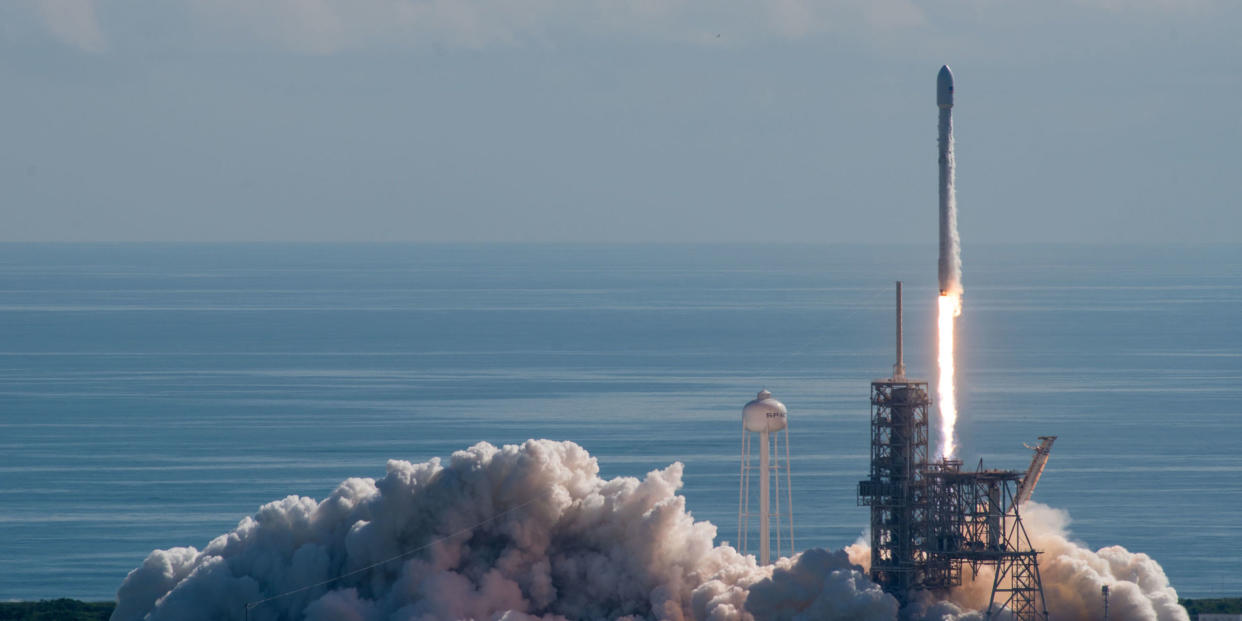SpaceX Is Planning a Mystery Launch for Northrop Grumman Next Month (Updated)

Update 5:10 p.m.: A commercial launch contract acquired by NASASpaceflight.com indicates the payload for the Zuma mission will be supplied by Northrop Grumman. The site reports that the mission type is listed as "government" and the contract calls for a launch between November 1 and November 30.
Original Post:
An application SpaceX has submitted to the FCC reveals that the company is planning a Falcon 9 launch for an undisclosed customer. Codenamed "Zuma," the mission will launch from pad 39A at NASA's Kennedy Space Center in Florida and could occur as soon as November 10, as first reported by NASASpaceflight.com and Spaceflight Now.
It's unusual that the launch, disclosed in FCC applications that are public record, has remained unannounced to the public so close to the planned launch date. No customer, company or government has claimed ownership of the payload, which is also uncommon but not unheard of. Even the spooky National Reconnaissance Office (NRO) publicly announces launches for its spy satellites, such as the NROL-52 launch on an Atlas V rocket on Sunday, October 15, although the intelligence agency keeps the details of its satellites and missions classified.
SpaceX did not immediately respond to a request for comment.
During a Falcon 9 launch, SpaceX uses telemetry transmitters and receivers to track the flight of the rocket, and the company must file an application with the FCC to do so. Two applications were filed concerning the mystery launch: one for the launch vehicle's liftoff from pad 39A and another for the first stage's return to Earth for a landing attempt at Landing Zone 1 at Cape Canaveral Air Force Station.
The details of the launch add to the mystery of the mission's purpose. As Spaceflight Now points out, the most common types of satellite launches-high orbit communications and low orbit Earth imaging-are both unlikely given the circumstances of the launch. From Spaceflight Now:
Zuma's owner-commercial or government-has not been revealed, and Falcon 9 launches into high-altitude geostationary-type orbits populated by communications satellites typically use more of the rocket's propellant reserve, requiring landings on vessels at sea, and not on land.
Earth-imaging satellites that fly in lower orbits normally launch into polar orbits providing more global coverage. Such payloads flying on Falcon 9 rockets usually take off from Vandenberg Air Force Base in California, but launch trajectories to the northeast from Cape Canaveral have been used for some NRO satellites in high-inclination low Earth orbits, most recently in May when a Falcon 9 rocket launched from Florida placed a secretive payload 250 miles above Earth for the government's spy satellite operator.
Two satellites built by Lockheed Martin for undisclosed customers were launched by United Launch Alliance in 2009 and 2014 under similarly mysterious circumstances. Eventually, it was revealed in documents leaked by Edward Snowden that at least one, called Palladium At Night (PAN), was used to intercept data for intelligence and military operations over the Middle East. For its part, the NRO has another satellite launch planned for December 13 on a Delta IV rocket.
Whether Zuma is another classified intelligence-gathering satellite is unclear. It's possible that nothing official comes out about the mission for some time, if ever.
SpaceX has already achieved 15 successful launches in 2017, and the addition of the Zuma mission puts the spaceflight company on track to potentially launch 20 missions before the year is out. SpaceX is planning three more communications satellite launches and one more resupply mission to the International Space Station in addition to the mystery launch in November. The next planned launch is the Koreasat 5A communications satellite for South Korean company KTsat, slated for liftoff from Kennedy Space Center on October 30. It's also possible that SpaceX's last mission of the year, the Spanish communications satellite Hispasat, could fly on the inaugural launch of the Falcon Heavy rocket.
Five more launches this year would certainly thrill spaceflight enthusiasts, but none will attract more interest than the Zuma launch, which amateur satellite trackers are sure to keep close tabs on from the moment it rockets off the pad on Florida's Atlantic coast.
You Might Also Like

